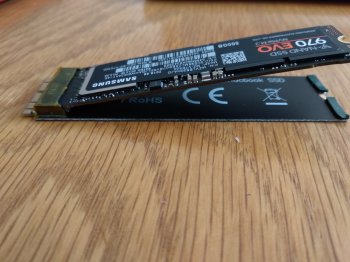Hi guys,
I tried to perform an upgrade from 10.13.5 to 10.13.6 and somehow it failed. My MacBook Air is a mid-2013 one without SPI ROM mod. I’m not sure if this is related to NVME SSD? The model is ADATA SX7000.
The problem was the installation process stopped, prompting “some files cannot be moved to...” blah blah (I can’t really remember lol), and there’s only a “restart” button. I hit the button and my MacBook Air fell into some sort of limbo.
I could make it to the safe mode but couldn’t fire up any apps except the activity monitor. ReportCrash was busy, hogging 100% CPU usage. I even try single user mode with fsck -fy failed to repair the file system. It only spit out “error 83”, “device error” that sort of messages.
I gave up and grab my Time Machine external disk. When I went into Recovery Mode, I found that there were actually local snapshots available on the corrupted disk, and magically it worked! Recovery to one of the previous snapshot only took 10 seconds and after the reboot, everything works!!
I got to say fsck tools for APFS still suck a lot but local snapshots are truly useful.
I tried to perform an upgrade from 10.13.5 to 10.13.6 and somehow it failed. My MacBook Air is a mid-2013 one without SPI ROM mod. I’m not sure if this is related to NVME SSD? The model is ADATA SX7000.
The problem was the installation process stopped, prompting “some files cannot be moved to...” blah blah (I can’t really remember lol), and there’s only a “restart” button. I hit the button and my MacBook Air fell into some sort of limbo.
I could make it to the safe mode but couldn’t fire up any apps except the activity monitor. ReportCrash was busy, hogging 100% CPU usage. I even try single user mode with fsck -fy failed to repair the file system. It only spit out “error 83”, “device error” that sort of messages.
I gave up and grab my Time Machine external disk. When I went into Recovery Mode, I found that there were actually local snapshots available on the corrupted disk, and magically it worked! Recovery to one of the previous snapshot only took 10 seconds and after the reboot, everything works!!
I got to say fsck tools for APFS still suck a lot but local snapshots are truly useful.


